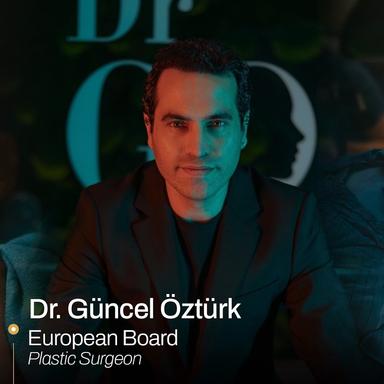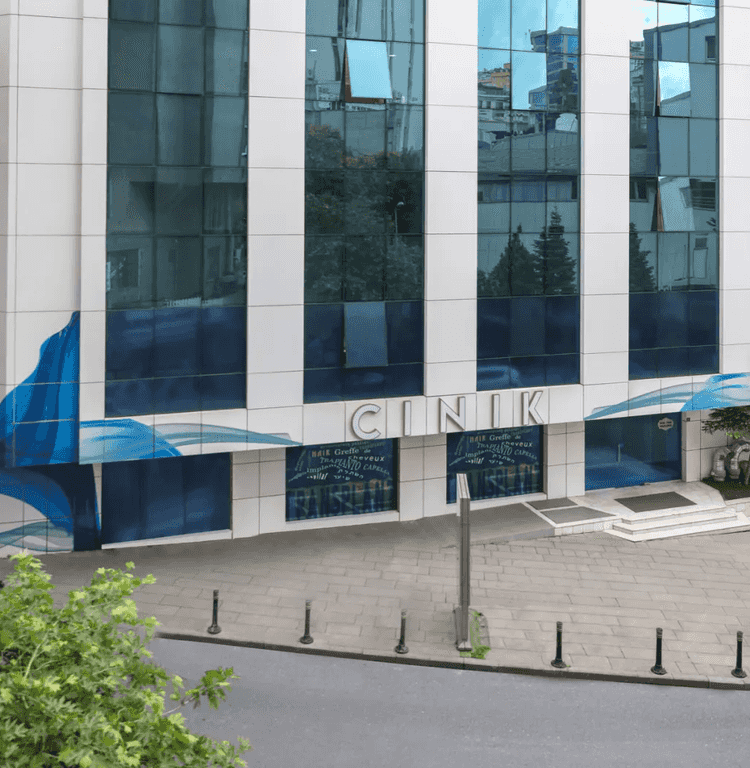DHI Hair Transplant: Procedure, Costs, and Advantages

Prathyusha Itikarlapalli
- Content Writer

Guncel Ozturk, MD, FEBOPRAS
- Reviewed by

Key Takeaways
- DHI hair transplant is a variation of the modern FUE hair transplant. The technique offers natural-looking results without showing up scars.
- Hair transplant specialists use a special Choi implant pen to create implant grafts without making channels on the scalp.
- DHI hair transplant costs between $2,500 and $15,000 around the globe. The exact cost depends on the country, clinic, and doctor one chooses for surgery.
Hair loss is a growing concern among the younger generation. Solutions like low-level light therapy, topical minoxidil, and oral finasteride are non-invasive.[1] However, one needs to be consistent in their usage for effective results. Many candidates show hair fall regaining back its full swing when aborting minoxidil usage.[2] In fact, patients look for hair loss treatments that offer permanent results. Hair transplant surgeries offer natural, long-lasting results. One can expect a natural look for a receding hairline or a bald crown.
Hair transplant surgeons extract healthy hair follicles from behind the scalp and implant them on the hair-thinning spots of a balding crown. These hair follicles resume a normal growth cycle and start growing. Gradually, a bald crown transforms into a voluminous crown with appreciable hair density.

With advancing science and technology, various hair transplant procedures have evolved. FUT, FUE, and DHI are the popular methods for surgical hair restoration. These compete with one another, defeating the disadvantages of their peers.
- FUT hair transplant: Follicular unit transplantation involves the extraction of healthy hair follicles from a thin strip of hair obtained from the back of the scalp. Hair transplant surgeons will extract individual hair grafts and implant them into the bald areas. Although it is a cost-effective method compared to the others, this method leaves a long scar on the back of the scalp.[3]
- FUE hair transplant: The follicular unit extraction involves picking up individual hair grafts from the donor areas using specialized devices. The hair transplant specialists will open channels in the recipient areas to implant these harvested grafts. This method is relatively expensive, and grafts need to be handled with care. The viability of extracted grafts is essential for the treatment’s success.
- DHI hair transplant: Direct hair transplantation involves immediate implantation of the extracted grafts into the recipient areas. A specialized device extracts the grafts and inserts them by eliminating the step of channel creation.
FUT is regarded as an outdated method owing to the advantages offered by the others. FUE and DHI are popular for being minimally invasive with a quick recovery. DHI hair transplant is one of the top preferred hair restorative methods. Now, let’s get into the details.
What Is DHI Hair Transplant?
The DHI, also called the direct hair transplant technique, is an advanced method of surgical hair restoration. Owing to its technicality, only skilled and certified hair transplant specialists can perform the procedure. They use a special device called Choi implanter to make holes and implant the extracted hair grafts. The Choi implanter skips the step of the channel making, reducing the hair transplant surgery time. However, using a Choi implant pen requires special expertise, and only specialists with hands-on experience can handle the procedure.
What Is Special About the Choi Implant Pen?
A Choi implant pen is a patented, special medical device with a hollow needle, plunger apparatus, and connecting tube. These Choi pens are available in various sizes. Unlike traditional FUE, which requires two hair transplant doctors, one hair transplant specialist can perform both graft harvesting and implantation processes. This decreases bleeding at the implant site and reduces the chances of follicular trauma. More importantly, the use of Choi implanter pens in DHI hair transplants improves graft survival rates.
Why DHI Hair Transplant?
One of the biggest concerns with traditional hair transplants is maintaining the viability of hair grafts. Only healthy and viable extracted hair grafts can show hair growth. Hair transplant doctors carefully extract intact grafts, preserving their viability. Even then, external factors like the hydration percentage and surrounding temperature can impact their viability.[4] The DHI hair transplant specialists reduce graft transection rate using the Choi implanter. The Choi pen skips the phase of opening channels, and the grafts are implanted directly. This reduces the chances of grafts getting heated up and losing moisture. Moreover, the Choi pen makes the slightest slits that are hardly seen. So, the downtime of the procedure is quite low. Isn’t it overwhelming to understand the benefits of the procedure? Don’t worry we listed them for you.
Advantage of DHI Hair Transplant
The popularity of DHI hair transplant is mainly because of its benefits, such as:
- Safe and effective
- Painless procedure
- Scar-free, natural-looking results
- Suitable for men and women
- Do not require shaving of the head
- Minimally invasive with quick recovery
DHI vs. FUE
DHI is a variation of the traditional FUE hair transplant. The extraction of the hair grafts follows the same method for both procedures. However, the main difference lies in the implantation process. Below, we tabulated the differences.
DHI hair transplant vs FUE
|
DHI Hair Transplant Method |
FUE Hair Transplant Method |
|
Individual hair follicles extracted meticulously |
Individual hair grafts extracted either manually or using a micromotor punch |
|
Graft implantation requires a Choi pen |
Graft implantation requires making slits on recipient areas to open channels |
|
Graft implantation using a hollow needle-like Choi implanter pen requires hands-on experience |
Skilled professionals can perform graft implantation using fine shaft like Sapphire blades |
|
Variants include robotic DHI hair transplant |
Variants include manual FUE and Sapphire FUE hair transplant |
Having learned the DHI hair transplant meaning, let’s jump into the cost aspects.
Know the DHI Hair Transplant Cost
Globally, the DHI hair transplant price ranges between $2,500 and $15,000. Note that cost of DHI hair transplant depends on the surgeon's expertise, the intensity of hair loss, and the clinic's geographic location. Typically, the costs in developed countries are higher. For instance, a DHI hair transplant in USA can cost around $15,000. On the other hand, a DHI hair transplant Canada will cost you a maximum of $12,000.
The prices are pretty affordable in countries like India, Mexico or Turkey. A DHI hair transplant Mexico costs $4,000. Suppose you choose popular destinations like Turkey or India, it is more affordable. A DHI hair transplant India costs the lowest at $2,500. On the other hand, a DHI hair transplant Turkey will cost you $2,800. These prices include numerous amenities as part of hair transplant packages. It’s worth noting that experienced surgeons charge higher. However, one can expect definite results at reliable hair transplant clinics. Below, we tabulated the country-wise prices for DHI hair transplants.
DHI hair transplant costs in various countries
|
Country |
Cost |
|
USA |
$15,000 |
|
Canada |
$12,000 |
|
Mexico |
$4,000 |
|
Turkey |
$2,800 |
|
India |
$2,500 |
#Average prices. The exact costs are case-dependent.

Who Is a Candidate for the DHI Hair Transplant Method?
Indeed, it's true that a DHI hair transplant is for candidates with hair loss problems. You are an eligible candidate if you have enough hair density in the donor region and are over 25 years old. You should be a healthy candidate free from chronic health conditions. More importantly, you need to have realistic expectations and be able to follow the aftercare measures.
DHI Hair Transplant: What To Expect?
Here are some important points to know about DHI hair transplant.
- A hair transplant surgeon will carry out the procedure under local anesthesia, and it will take nearly 6-8 hours.
- It is an outpatient procedure and does not require a hospital stay.
- After the procedure, the doctor applies antibiotic cream and covers the donor and recipient areas using bandages.
- You will receive the first shower the next day at the clinic.
- Take 3-4 days off from work. Note that the DHI hair transplant recovery time takes ten days. However, resume routine physical activities like moving around on the same day.
- Refrain from strenuous exercises for two weeks.
Like any medical procedure, a DHI hair transplant has potential side effects, such as scarring and bleeding of the implant and recipient site. Implant site infection and inflammation are other potential risks. However, when an experienced and skilled hair transplant specialist performs the procedure, the chances of these issues arising are relatively less. More importantly, you need to follow the post-treatment instructions for successful results.
DHI Hair Transplant: Post-Treatment
The first week after a hair transplant is crucial. Expect some redness and soreness in the donor and recipient areas. The donor and recipient sites show some discharge oozing out. This is a part of healing. However, if the DHI hair transplant after one week, continues the same, don't hesitate to see your doctor. Your hair transplant surgeon’s expertise and the aftercare one follows decide the success of a DHI hair transplant. The transplanted hair follicles need a proper microenvironment to adjust to the new site and begin a normal growth cycle.
- Use the prescribed antibiotics for a few days to prevent implant site infection. Wear the therapeutic headband.
- Avoid aspirin or other blood thinning medications during the initial days after treatment.
- Use gentle shampoo suggested by your hair transplant doctor. Wash the scalp area with your fingertips. Do not scratch the scabs or use warm water during the initial days.
- Strictly avoid smoking and alcohol consumption for at least three weeks.
- Sleep with your head elevated over a pillow during the early days after the DHI hair transplant.
- Use ice packs to reduce puffiness and swelling around the eyes. The swelling usually occurs in the forehead areas on the third or fourth day.
- Wear a hat when you go out. Its better to avoid exposing your hair grafts under direct sun for at least a month.
- Do not use hair dryers for at least six months since the heat generated by blowers can damage the follicles. Instead, air-dry your growing hair strands.

Hair follicles typically follow a growth cycle. The implanted grafts behave like normal follicles and begin to show growth. By following these aftercare measures, one can expect successful DHI hair transplant results.
DHI Hair Transplant Results Month by Month
The transplanted hair follicles take some time to acclimate and start to grow. They adopt a stage-wise growth cycle which we listed below.
- After the first month: Expect shock loss or the fall of new grafts around the periphery of implant areas. This is normal and occurs due to tissue trauma and a lack of oxygen for the new grafts. Don’t worry, as the new strands will grow out of these grafts.
- 3rd to 4th month: Transplanted hair follicles show growth. Initially, the strands begin to grow as thin hair that grows thicker with time.
- 6th to 9th month: Hair growth continues with appreciable volume. Strands grow to 5-7 cm in length.
- After the 12th month: Full-fledged results with voluminous growth.

The quality of outcomes of a DHI hair transplant results are monitored using the patient photographs. Ideally, when a trustworthy provider performs the procedure, one can expect effective results with a natural hairline and voluminous scalp area with dense hair growth. Scroll further down to witness the difference.
DHI Hair Transplant Before and After
For those who feel that a DHI hair transplant is a hoax, here are the treatment before-after images of some real patients.

Aren’t they impressive? A DHI hair transplant is a safe procedure with effective results within a year. One can expect voluminous hair growth and a natural-looking hairline within 12 months after a DHI hair transplant procedure. Note that the effectiveness of the results depends on the surgeon's expertise and the clinic one chooses. And in case finding a DHI hair transplant near me is your struggle, here is the checklist to consider.
- Surgeon’s qualifications, years of experience, and area of expertise
- Hair transplant specialist credentials, global affiliations, or professional memberships
- Clinic accreditation and regulatory body affiliations
- Safety and sterilization standards and technology used at the clinic
- DHI hair transplant reviews of real patients
- DHI hair transplant before and after photographs
Ditch those worries about finding a trustworthy provider for your reclining hairline. At Envoy Health, we partner with the leading hair transplant specialists worldwide—and they are perfectly vetted, too! Sign up with our platform to book a virtual consultation. Pour your worries and get expert advice along with a price estimate. It's as simple as a breeze. The right decision assures you a stress-free experience on a journey toward regaining your confidence.
References
- Treatment Options For Androgenetic Alopecia: Efficacy, Side Effects, Compliance, Financial Considerations, And Ethics
- Compliance To Topical Minoxidil And Reasons For Discontinuation Among Patients With Androgenetic Alopecia
- Complications In Hair Transplantation
- Direct Hair Transplantation: A Modified Follicular Unit Extraction Technique
Disclaimer
The information in this article is for educational purposes only and does not replace medical advice. Always consult your doctor before starting any treatments.
A DHI hair transplant will be carried out under local anesthesia so that you don’t feel any pain or discomfort. Further, after the procedure, the best hair transplant surgeon in Turkey prescribes painkillers to deal with post-procedural discomfort.
Both DHI and FUE hair transplants offer scar-free, natural-looking results with easy recovery. However, the DHI technique reduces graft desiccation, increasing the viability chances and further enhancing the success rate. The success of DHI relies on the surgeon's expertise. Hence, the choice of DHI or FUE depends on the surgeon and clinic one chooses for hair restoration.
When done improperly, DHI hair transplantation can result in scarring, bleeding, and pain. More importantly, the technique offers successful results only when a skilled and experienced professional performs it. Since DHI employs a special device called a Choi implanter, only an expert can handle it well.
The average cost of DHI in the US is $15,000, with the highest costing up to $20,000. This cost is quite expensive compared to other techniques like FUE and FUT. On average, getting FUE in the US will cost around $12,000 and $11,000 respectively.
The number of DHI hair transplants needed depends on the intensity of the hair loss. The early stages of a balding crown can acquire full-fledged results with a single session. However, severe stages of balding require 2-3 sessions.
The effectiveness of the DHI hair transplant depends on the surgeon's expertise and the aftercare steps one follows. Technically, the DHI aims to reduce graft transection rates, enhancing graft viability and treatment success. An experienced hair transplant surgeon like Dr. GO at the Hair Neva Clinic assures you a success rate of 95% for the best DHI hair transplant in Turkey.
So, we partner with the premier healthcare facilities!
Send me the list

